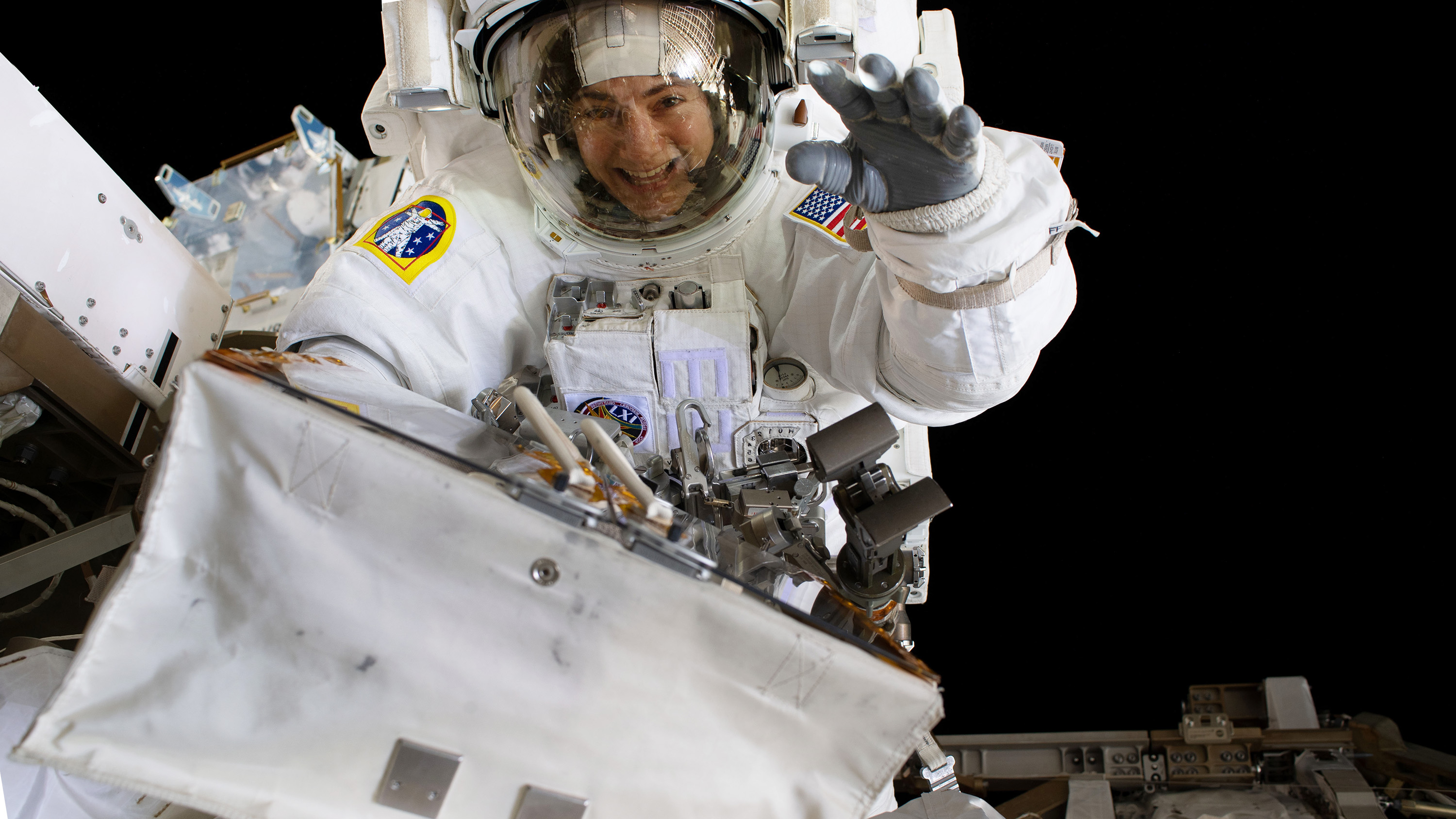New NASA radiation rules could open up space missions to more women
A recent report recommends uniform radiation exposure thresholds for all astronauts, regardless of gender.
Because Earth’s magnetic fields are able to protect us from much of the radiation that barrels through space, humans on this planet aren’t exposed to much of it—only about 3 to 4 millisieverts (mSv) every year. An astronaut staying on the International Space Station for 180 days, on the other hand, would get hit by 50 to 180 mSv.
How that affects you depends on many different factors, including gender: radiation exposure is associated with additional risk of breast, ovarian, and uterine cancer.
Under current NASA standards (based on models informed largely by studies of Japanese atomic bomb survivors), astronauts can continue to fly missions only as long as their excess lifetime risk of developing a lethal cancer stays under 3%—that is, among 100 astronauts who have flown into space for the same amount of time, only three would be likely to die from space-radiation-induced cancer. This means that at the low end, a 30-year-old woman could be exposed to no more than 180 mSv throughout her career; at the upper limit, a 60-year-old man could endure up to 700 mSv before being grounded.
This story is only available to subscribers.
Don’t settle for half the story.
Get paywall-free access to technology news for the here and now.
Subscribe now
Already a subscriber?
Sign in
Those standards haven’t been changed for over a decade, but now NASA may consider scrapping them for something more uniform. A report released June 24 by the National Academies of Sciences, Engineering, and Medicine recommends setting a single, career-long limit of 600 mSv for all NASA astronauts, regardless of gender or age. That new limit, if adopted, could give women of all ages more opportunities to fly long-duration missions that they might otherwise have been excluded from.
There are good reasons NASA, which commissioned the NAESM report, wants to update its radiation standards. The agency wants to send astronauts back to the moon as early as 2024, and eventually to Mars, but the current radiation limits only apply to missions to low Earth orbit (LEO).
“It’s sort of time to revisit the radiation standards, based on new plans for longer-duration missions,” says Jeffrey Kahn, a professor of health policy and management at Johns Hopkins University and a coauthor of the new study. “When you go beyond low Earth orbit, and beyond the space station, thinking about radiation in [terms of] just ‘days in space’ won’t work anymore.”
Hedvig Hricak, chair of the department of radiology at Memorial Sloan Kettering Cancer Center and chair of the committee that wrote the NASEM report, also adds that the new recommendations are “more aligned with other occupational limits” concerning radiation exposure in other industries. NASA’s previous estimates, she says, were more concerned with immediate risk than with cumulative lifetime exposure.
There is also, frankly, a desire from NASA to ensure that the Artemis program, which aims for a moon landing, does not retain the middle-aged-white-guy look of the Apollo program in the 1960s and ’70s. NASA wants the first new crew it sends to the moon to include a woman, and it aims for the program as a whole to provide equal opportunities of participation to astronauts “independent of sex and age,” as the NAESM report states.
The 600 mSv limit also brings NASA to a standard that’s closer to the rest of the world’s. Most other big space agencies (like Canada’s, Europe’s, and Russia’s) have a simple 1,000 mSv radiation limit for all their astronauts. Even at 600 mSv, NASA would still be more cautious than others. Hricak says this helps to allow for uncertainties, since there is still much we don’t know about space radiation.
The 600 mSv figure is based on what the maximum allowable exposure might be for a 35-year-old woman. NASA considers this age group, the youngest in the astronaut corps, to be “at the highest risk” of cancer-induced mortality from space radiation. “Radiation-related cancer risk is highest for younger age at exposure, particularly for breast cancer,” says Amy Berrington de González at the National Cancer Institute, another coauthor of the NASEM study. “We don’t understand the biological explanations for this well yet, but many studies have shown this age-at-exposure effect.” So applying a universal standard based on the risk for this demographic would theoretically be the “most protective” approach.
There are trade-offs, however. “Some women may actually be exposed to higher doses as a result of the revised standard,” says Kahn. And although adopting this new limit would ensure that sex doesn’t play a role in astronaut selection for new missions, it does raise the possibility that older astronauts could be excluded earlier than they ought to be. That could be an especially thorny issue when it comes to the first missions to Mars, where experience in deep space could be critical.
Even just a simple 600-day trip to Martian orbit would likely result in radiation doses of over 1,000 mSv, pushing the risk of mortality from cancer to over 5% in 40-year-old women. NASA won’t have to think about Mars for at least another decade, but it will need to reconsider what an acceptable risk of radiation exposure might be, barring some game-changing solution like better shielding.
Every astronaut knows the risk of spaceflight, but at the same time, “as an agency NASA has a responsibility to protect the people they put in harm’s way,” says Kahn.
